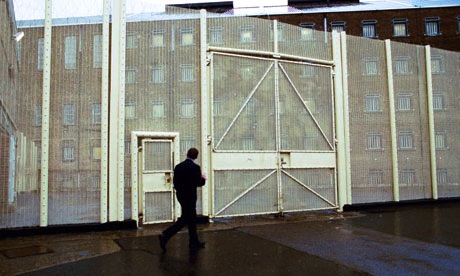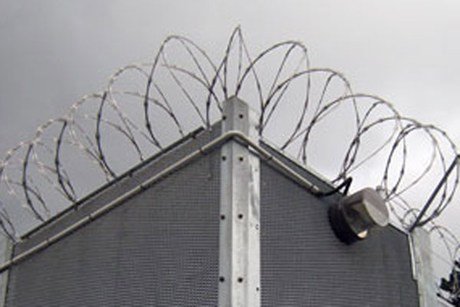In Australia, where repeated governments have pursued ever-tougher ‘Laura Norder’ policies, the barriers are high to establishing a human rights conversation around the rights of prisoners.
Such a proposal is frequently dismissed as politically inconvenient – perhaps because the criminal justice system is perceived to serve the interests of the community and incarceration is viewed as a measure that ensures offenders do not return to crime on their release. It’s an ideological bent that serves to support a society too invested in retributive policies.
Crime usually generates enough emotion to polarise community opinion. To advocate harsher or longer sentences may seem a logical solution but it can make prisoner rehabilitation much harder – and lead to poor overall social outcomes in the long run.
So where does this leave the advancement of the human rights of female prisoners when exiting the criminal justice system? While women are likely to commit minor offences and make up a minority of the prison population, for them the difficulties of social reintegration are astoundingly great.
In 2009, some 854 women were imprisoned in NSW, compared to over 10,000 men. But when it comes to community reintegration, the complex social and economic barriers female offenders face frequently make for an uphill battle. In Australia, they face multiple human rights challenges post-release, and discrimination in all its forms.
Research on community reintegration suggests that family estrangement and separation, poverty and homelessness, drug and alcohol issues and lack of secure, stable, legal employment, are critical factors that must be considered in addressing the reintegration needs of women.
Kat Armstrong, manager of the Women in Prison Advocacy Network (WIPAN), says discrimination and social stigma from serving a sentence is evident in many branches of authority when attempting to reintegrate.
“There are many human rights issues but the basic one is discrimination,” she says. “When they try to access government departments, or get their ID so they can open a bank account or get a driver’s licence or fill out a form for housing… and they advise that they’ve been in prison, they’re instantly judged and discriminated against.”
According to Armstrong, basic services in areas such as education, health and housing are difficult for women to access post-release.
“Some fundamental and basic human rights are often breached as a result of having served a sentence,” she says. “When they try to get a job and are asked, ‘What’s the gap here for the last eight years?’, and they’re honest about it, you’ll find the interview won’t go any further. So, they’re not hired or given the opportunity based on their merit or skill if they happen to have any.”
The challenges in finding employment post-release can also play out on a deeper psychological level.
“It’s very difficult. You want to be a productive honest member of the community that doesn’t lie, cheat or steal anymore. But by being honest and open, that will go against you, and so it contradicts totally what they’re trying to achieve,” she says.
“The women that I deal with who’ve gone on to get employment and have done really well have made no reference whatsoever to their background or where they were. Their employer and work colleagues have no idea where they’ve been. That’s the only way that I’ve seen people able to get employment.”
Complicating matters further are the women in prison who have experienced sexual, physical or child abuse – or all three – during their lives. In Australia, an estimated one in three women will have experienced an unwanted sexual experience by the time they are 18. One in five will have experienced sexual violence since the age of 15.
On release, female prisoners who suffer from a history of abuse face the compounding effects of discrimination. That increases the risk of returning to relationships plagued by domestic violence, attempting suicide, or breaching probation and parole orders and re-offending.
This all underscores the need for a more holistic approach towards correctional intervention for female offenders.
“While there’s some good people that work within the Department [of Correctional Services] itself, it’s such a big machine,” Armstrong says. “And little steps forward are a long time coming.”
Prison-based rehabilitation in NSW – incorporating education, life skills and confidence-building measures – assists in the social reintegration process but supply does not keep up with demand.
“The Department of Corrective Services will tell you that they put $18.1 million per year into programs, education, and training for rehabilitation purposes and I honestly can’t see where that goes,” Armstrong says. “There are a lot more programs available to men because there’s more men in prison than women. Unfortunately, for women it depends on what jail they’re in at the time.”
But this isn’t the only bone of contention with what Armstrong calls “outrageous and atrocious” behaviour when dealing with DOCS.
“The hoops that they try to make the women jump through to try and even just get supervised access, let alone custody back with their children, are ridiculous. I know that if it was some white, middle-class woman with money she wouldn’t have to go through it,” she says.
Part of the problem revolves around a lack of consistency in the running of programs. According to Armstrong, the programs are very limited, meaning the majority of inmates are not able to benefit from them – only around 20 spots are available for every 250 prisoners.
“There’s currently a really good program that’s just started for women who are victims of domestic violence and sexual assault – given that 87 per cent of women who go to prison are victims of domestic violence and sexual assault,” she says.
“But again, only four to six women at any one time can do the program. It’s a good thing they have the program but to help four to six women at a time when there’s 700-800 women in there, it’s just not enough.”
Such multiple complexities highlight the importance of offering a multifaceted, integrated approach to rehabilitation – if not in prison, then surely on release. But Armstrong is downbeat when comparing NSW post-release support initiatives, law reform and training activities to other states.
“I think we’re way behind other states, particularly Victoria,” she says. “While [they aren’t] perfect by any means… they allocate more money, more budget, more programs.”
With the state government claiming that budgets everywhere are under pressure, it paints a rather worrying picture of the immediate future of rehabilitation programs within the NSW prison system.
“The Liberal Government is about surplus[es], so there’s been a lot of cuts,” Armstrong notes. “[Take] WIPAN, for instance – we were funded by the Labor Government. Since the Liberals have come in, we haven’t got any further funding, and after repeat campaigning and approaches to the government, we still haven’t got any funding.”
This, she says, is despite the government having acknowledged on multiple occasions both the positive effects of the program on prisoners and its positive budgetary effects – savings of up to $100,000 annually for every woman kept out of jail.
“If you can mentor and support them for $2000-3000 per year, compared to them sitting in jail for over a $100,000 a year, that’s an enormous saving,” Armstrong points out. “But unfortunately, this Liberal Government isn’t about [provision of] welfare, and marginalised and disadvantaged people, and they openly say so.”
With the prison system so overstretched, the job of addressing the rehabilitation requirements of female prisoners has fallen, in part, to not-for-profit rehabilitation services, such as Guthrie House, an inner-city non-profit rehab and transition service that provides a drug and alcohol-based program that emphasises life skills.
“Our main goal is to intervene with former prisoners’ drug use and help rehabilitate them; and also to steer them away from crime and break the cycle of recidivism,” says Debra Anthonisz, Outreach Coordinator of Guthrie House.
“But we’re not just a rehab; we work on transition back into the community. We’re different from other rehabs in the sense that the girls get a lot of freedom, they get five hours a day where they can go to their own appointments. They can come in and out; they’re not contained.”
This is a specialised environment that helps women from the day they are released. Anthonisz says this element is crucial: without suitable accommodation and support, there is a high likelihood the women may find themselves homeless once again, and at dramatically increased risk of recidivism.
“Our priority is that women come straight from jail, so we will pick them up from jail and bring them straight here; and they must have a drug and alcohol problem,” she says. “A lot of other rehabs will take women, but they don’t specialise [in this way].”
As the only one of its kind in NSW with a range of support initiatives for clients, Guthrie House has taken a lead in promoting progressive change.
“Quite often, when they do the Outreach Program here, they do want to do TAFE,” Anthonisz says. “For some of them, a classroom is a new experience, so we’re just trying to get them back on the track of learning.”
Guthrie also provides a much-needed service to address mental health needs on an individual basis. “Women here have access to a psychologist where they can have weekly appointments; we have a mental health nurse so their mental health needs can be assessed properly, and with proper medication.”
But with only nine beds available, they have a big waiting list.
Anthonisz can’t stress enough how vital places like Guthrie House are to women post-release.
“There need to be so many more Guthrie Houses. Women need that support; they need a really holistic approach to transition back into the community, particularly when they come out with drug and alcohol problems,” she says.
“So often, their kids are removed from them, they come out with criminal records so it’s difficult for them to get employment; they can’t go back to the areas they come from; they’ve lost housing, they’ve lost possessions and it’s literally a steep climb back up. Services like this are amazing.”
For advocacy work done by WIPAN, Guthrie House and other support organisations, Anthonisz doesn’t see much progress in the level of NSW support services, despite the increasing number of women entering prisons.
“I’ve been working here three years and in that time I haven’t seen anything,” she says. “There are some improvements; there’s a bail support system program that started up a couple of years ago, and there are a few different programs that started up…”
Her voice trails off.
“…but nothing much… the media’s talking all the time about how percentages of women going to prison is just rising and rising – but there’s no increase in these services.”
And WIPAN’s Armstrong agrees, pointing out that lack of services and high demand is an important factor in a woman’s return to jail.
“That’s why you’ve got a recidivism rate of almost 50 per cent of women – because they don’t have the support systems in place. Adjusting and trying to find a house, trying to get clothes and food are significant when you’ve got absolutely nothing and a $236 Centrelink cheque to do you for two weeks.”
Lack of access to appropriate services for women in remote or rural areas is even worse.
“It’s harder because they’ve got even fewer services available with housing and everything else and so they go back to violent domestic relationships and/or really bad family environments.”
Armstrong says that with the help of advocacy groups women can experience transformational change so their past is not a blueprint for their future.
That’s the good thing about WIPAN: it supports the woman and concerns itself with what she needs, how best to help her and empower her to keep her in the community.
“It’s just the human connection, and having somebody there they can talk to and they trust, which they’ve probably never had before – that’s enormous. It’s providing a network and the bridge to healthy relationships, and role models of what a healthy relationship is.”





Easy to check out, easy to read…heck I had fashioned to leave a commment!